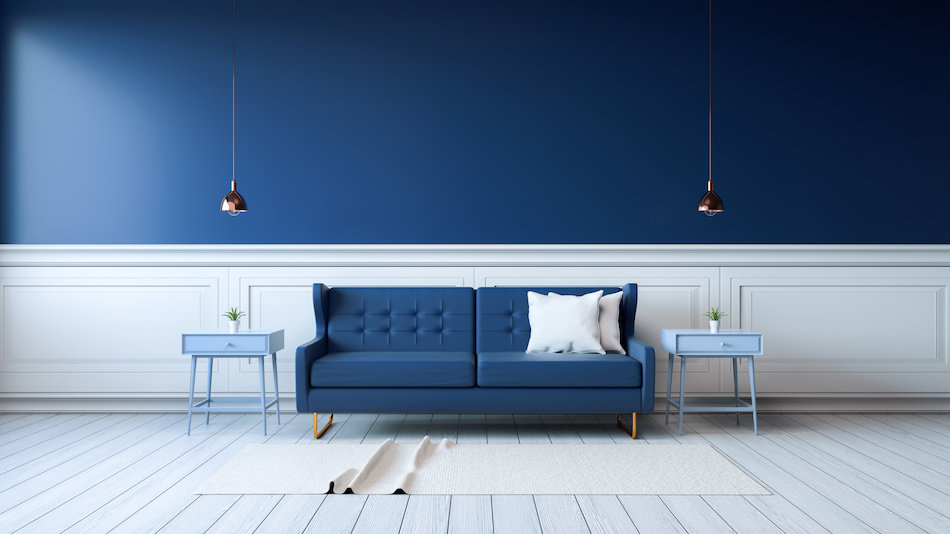Millennial Home Buying Statistics: How Millennials Are Bucking Home-Buying Norms
Posted by Justin Havre on Wednesday, August 28th, 2019 at 10:38am.
 Millennial home buyers would seemingly be the most eager of the population to delve into homeownership. However, current trends, statistics and surveys seem to say otherwise—at least according to details from Angus Reid for CIBC. In all, 42 percent of Canada's millennials have delved into homeownership, with 81 percent of those claiming they intend to sell in the future. Nearly two-thirds of such respondents claim they plan to sell due to the high cost of maintenance, taxes and mortgage payments.
Millennial home buyers would seemingly be the most eager of the population to delve into homeownership. However, current trends, statistics and surveys seem to say otherwise—at least according to details from Angus Reid for CIBC. In all, 42 percent of Canada's millennials have delved into homeownership, with 81 percent of those claiming they intend to sell in the future. Nearly two-thirds of such respondents claim they plan to sell due to the high cost of maintenance, taxes and mortgage payments.
So, what are millennials who have not invested in a home just yet thinking? According to recent statistics, 23 percent of surveyed individuals state that they have no plans to buy a home, while 29 percent doubt that a home purchase will ever be within their budgets due to increased mortgage costs and interest rates. Due to these reasons, a whopping 36% of millennials who haven't bought a home currently believe that renting a home, apartment or condo is the wisest option.
Furthermore, many of Canada's millennials claim that homeownership is making them cash poor, which is why many desire to sell. However, 62 percent claim that they are reluctant to sell their homes due to the fear of having to invest in a new home with the current hot real estate market that abounds today. For the time being, it appears that millennial home buying trends are slowing, but a rebound could just be around the corner depending on economical shifts.
Profile of a First-Time Home Buyer In Calgary
The definition of a first-time home buyer is self-explanatory. The definition of a starter home in Calgary — well, that has changed in the last 30 years.
Starter Homes, Then & Now
A starter home is that first toe into the marketplace – a home with the good, affordable price and excellent value for somebody or some family to enjoy when they are just getting into home ownership.
In the 1950s, starter homes had one or two-bedrooms. A starter home was detached and was either a very old home or perhaps a brand new tract home in one of Calgary's new suburban neighbourhoods and most new home buyers were in their early 20s. The average home price was $22,000 when an average income was just under $5,000 a year. As you can see, prices these days are not quite in sync.
Fast forward to 2006 when entry level single-family homes were priced in the low $200,000s. Today, those prices are still available for new buyers who are willing to purchase an apartment condo or a townhome. But detached product is now $320,000 to $350,000 depending on what area of the city the buyer is looking at. With those entry level pricing, buyers are looking at more for their money.
First-Time Home Buyers Are Getting Older
People that are buying their first home in Canada are getting older according to a new survey. BMO released a new report showing that the average age for purchasing a first home is 36 years old.
On the other hand, the majority of people that currently own their home made their purchase before the age of 30.
A lot of people that are making their first purchases in the country are millennials and many have to put off the home buying decision for a number of reasons. A lot of them are carrying a heavy student loan debt that takes them years to pay off before they can even think about saving for a down payment. As well, rising home prices are also slowing down the process.
First-Time Home Buyers Are Staying in Their Homes Longer
In the survey, some other interesting statistics about home buyers were also released. Of the first-time buyers, 22% are married, 50% are single and 19% are living common- law with a partner. The survey also showed that these individuals plan to stay in their first home for 15 years on average.
The report indicated that 4/10 of the first-time buyers would have to put off buying their new home due to high housing prices. Another report that was issued by BMO back in March, 2014, also showed that the timeline would be delayed for purchasing a new home due to rising prices and that many first-timers were predicting that their parents would be helping them out with a property purchase.
First-time buyers are now budgeting for a home worth $316,100 on average. In 2013, this number was sitting at $300,000. The average amount that is being saved by first-timers is 16% of the total cost of the home. This means that the average Canadian first-time buyer is attempting to save $50,576 to offer as a down payment for a new home.
More Millennial Women Seek Homeownership
 Many millennial women are putting aside goals such as having a baby and getting married. While these items are still present on the list, they appear below owning a home. An online survey was recently conducted by Cribsuite.com and the results showed that approximately half of the millennial woman that were surveyed said that their primary goal was home ownership.
Many millennial women are putting aside goals such as having a baby and getting married. While these items are still present on the list, they appear below owning a home. An online survey was recently conducted by Cribsuite.com and the results showed that approximately half of the millennial woman that were surveyed said that their primary goal was home ownership.
These days, many women want to be financially secure before looking at their other goals in life.
The website survey also showed other market trends that came out of this survey including:
- 56% of single women own their home and reside alone while only 47% of the single men surveyed were homeowners
- About 25% of the single women surveyed spent 50% or more of their annual income on housing costs while only 10% of the single men spent this much.
- Among the first-time buyers, almost 25% were single females while only 15% were single males
There are a variety of reasons why single women are becoming the majority of homebuyers including the ones below:
- Pursuing an education and a career before marriage
- Growing rates of divorce
- Women are earning more than they used to
It's a brand-new world today when you compare it to the way things were just 50 years ago. Women have a lot more options when it comes to career, family and real estate goals. It used to be expected that a woman would get married, have some children and raise them while the husband went off to work as the main breadwinner of the family. Nowadays, women are more expected to get an education, find a challenging career path and then look at family-oriented goals.
In the meantime, while the woman is establishing her career and supporting herself, she also needs to look at her housing options. With the high cost of rentals, it simply makes sense for anyone, including both men and women, to look at home ownership as a viable housing goal. Single women are doing just that and have now become one of the largest pools of potential home buyers.
Debunking Popular Millennial Home-Buying Myths
Millennials have been a hot topic in the real estate industry for a variety of reasons. From student loans to general changes in priorities, millennials have been buying property in smaller numbers compared to the generations that came before them. It's time to look into millennial home buying facts to separate truth from fiction.
Key Millennial Myths
Here are just a few ways that myths manifest in today's culture. People may believe one or all of the following, even if the evidence doesn't support it.
- Millennials don't want space
- Millennials don't want to own
- Millennials buy and sell property on their own
- Millennials are not as wealthy as other generations at the same age
Debunking the Myths
Millennials do by and large want to own a Springbank Hill home or property, but they recognize that this may not make much sense in the current economic climate. If employers aren't willing to show their employees that they're valued, then millennials can't be expected to stay at a company that doesn't treat them well. Instead, millennials are renting so they can stay flexible when it comes to their careers. And because millennials are used to moving around, they're also buying fewer and fewer material goods. They don't necessarily mind living in the larger apartment complexes because they still have space to roam around.
Millennials Want the Same Things
Younger people still want the same things that their older counterparts did. They use real estate agents to buy and rent because they know the sheer volume of paperwork is too much to handle on one's own. They look for neighborhoods with pools and parks so they can enjoy their leisure time, similar to any buyer of the previous generation. And many millennials actually can afford to buy if they factor in the programs that make homeownership more financially viable. In fact, in many parts of Canada, homeownership is actually going up among younger adults. Millennials can not only save for a down-payment and closing costs, they also can usually handle the monthly mortgage payment as well.
Millennials don't necessarily have to be classified as one group or another. Just like any generation, millennials are looking for safe and productive places to live, work, and start a family. Understanding their circumstances makes it easier to predict their overall behavior, but the nuances are really the key to explaining the market.
What Millennial Home Buyers Want
Millennials view homeownership just a bit differently than their older counterparts. This generation tends to place more value on the design and functionality of a space than its size. Millennials are also leading the helm when it comes to having a keen interest in smart home technology and energy efficiency.
Hot Design Trends: Millennials reportedly request design schemes that are considered modern traditional. They also request designers to create budget-minded casual and modern spaces that are functional for everyday living. Energy efficient appliances and solar power integrations are also top trends for millennials in today’s buying market.
Smart Technology: Millennials appreciate technology that allows them to control smart-enabled applications in and around the home. These include features such as remotely controlling door locks, indoor and outdoor lighting, smart thermostats and even certain appliances.
Other Millennial Must Haves: The same home features come up as the most important things these buyers want:
- Laundry Room
- Linen Closets
- Walk-In Pantry
- Garage Storage
- Exterior Lighting
Outdoor living space also tops the most desirable features, as millennials consider areas for entertaining and relaxing as an important part of their life. Essentially, millennials simply want many of the same things in a home that most others buyers do, but lean towards smart home ready options.
Millennials are Leaving Their Mark When It Comes to Design Trends
 A lot of the new and upcoming design trends are focused on the millennial generation. This is the largest generation that Canada has seen since the baby boom. Millennials, which are people that were born from 1982 up to 2004, are causing major design shifts. Recently, the company Hunter Douglas talked to millennial designers to find out what this generation is looking for and how the trends have shifted.
A lot of the new and upcoming design trends are focused on the millennial generation. This is the largest generation that Canada has seen since the baby boom. Millennials, which are people that were born from 1982 up to 2004, are causing major design shifts. Recently, the company Hunter Douglas talked to millennial designers to find out what this generation is looking for and how the trends have shifted.
Millennial designers aren't worried about the common rules and preconceived notions that have previously been in place. Informal and formal boundaries have become less distinct. Millennials aren't afraid to mix things up and experiment with the combination of modern and contemporary looks.
Individual expression counts the most and manufacturers are doing to their best to keep up with this design trend. This generation is looking for more options along with distinctive features on both modern and classic items.
Designers are able to make use of modern technology to help with this merging of the new and the old. Technology plays an important role nowadays when it comes to design projects. Clients and designers don't simply have to imagine how a project will turn out since it can be seen on the screen through design applications.
Hunter Douglas is also keeping up with these design trends by offering special design features at its official website to see how window coverings will look. You can upload personal photographs of your home and then try out different window coverings on the screen to see which style and color would best suit your home.
Clients and their designers can work closely together using various computer design programs to combine art and technology into one. This way, the mix of older and newer styles can be achieved graciously and with flair.
